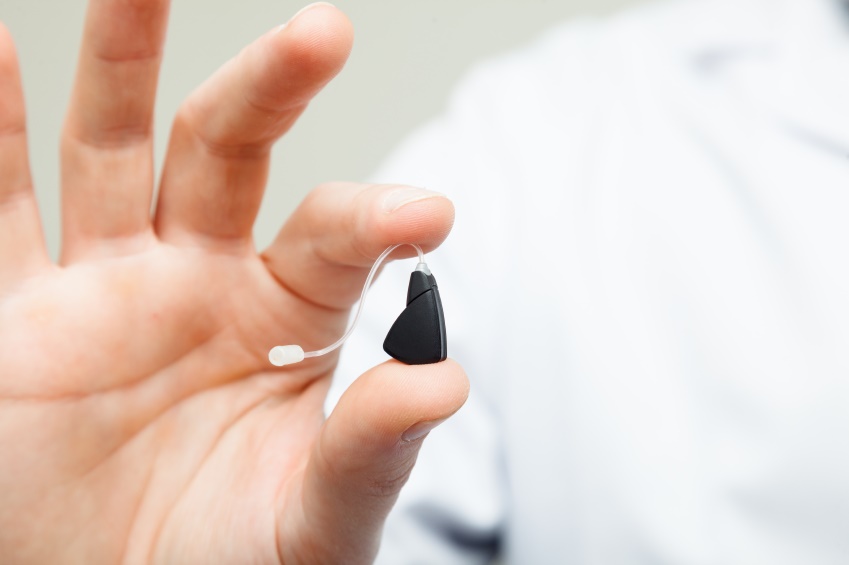
Hearing aid guides are not hard to find, but the majority are not exactly reader-friendly, either. Many are simply too long or complex, adding more perplexity instead of less.
My guess is that you’re much less interested in the physiology of hearing or in the particulars of acoustical engineering and a lot more interested in identifying the most appropriate technology at a reasonable price. Your intent is to hear better, not to read a 10-page manual.
If that represents you, then you’ll welcome this brief guide to hearing aids. We’ll review four small parts, and when we’re done, you’ll be set to work with your hearing care professional to discover the technology that’s right for you. Let’s get started.
How All Hearing Aids Work
Choosing a hearing aid can seem intimidating—there are several brands and seemingly limitless considerations. But it’s not as complicated as it seems. As you progress through this guide, keep in mind that all digital hearing aids function generally the same way, and include these four basic parts:
- The microphone picks up external sound and sends it to the digital processor.
- The digital processor adjusts the sound signal based on the settings programmed by the hearing specialist. The modified sound signal is then delivered to the amplifier.
- The amplifier increases the volume of the sound according to the programmed settings, amplifying only the frequencies the patient has difficulty hearing (while suppressing background noise). This signal is next sent to the speaker.
- The speaker presents the magnified sound to the ear, producing louder, clearer sound.
Additionally, all hearing aids include a battery, volume and setting switches, and remote controls.
Hearing aids really only differ in two essential ways: 1) style, and 2) advanced features. We’ll cover these in the next two sections.
Hearing Aid Styles
You have your choice of three primary styles:
1. Behind-the-ear (BTE) hearing aids hook over the top of the ear and sit behind the ear. The case is then attached to an earmold in the ear canal by a piece of clear tubing. BTE hearing aids are easy to handle and maintain, generally have an extended battery life, and can accommodate severe hearing loss.
2. In-the-ear (ITE) hearing aids occupy the outer part of the ear with a custom-molded shell. ITE hearing aids are smaller than the behind-the-ear hearing aids but larger than the in-the-canal styles. This makes ITE hearing aids easier to handle than the smaller styles but less detectable than the BTE style.
3. In-the-canal (ITC) hearing aids and completely-in-the-canal (CIC) hearing aids fit partially or entirely inside of the ear canal, which makes them nearly or entirely invisible. ITC and CIC hearing aids are custom molded to the shapes of the ear, and some types can be worn for several months at a time.
When choosing a style, consider the tradeoffs among user-friendliness, battery life, and concealment. Your hearing care expert will help you prioritize your preferences and pick the most appropriate style.
Hearing Aid Advanced Features and Accessories
Once you’ve settled upon the right style, you can decide which of the following advanced features you need—and which you don’t.
- Directional microphones permit you to concentrate on the sounds and conversations directly in front of you while reducing the disruption of loud background noise.
- Telecoils, or T-coils, allow you to talk on the phone while cutting down on the static caused by background noise.
- Environmental noise control allows you to optimize hearing based upon your environment, for example in a quiet room at home versus in a hectic restaurant.
- Direct input to sound sources such as televisions, radios, computers, and music players allow for clear sound without background noise.
- Wireless connection to mobile phones converts your hearing aids into top quality wireless headsets. The hearing aid settings can be controlled from the phone (or smart watch), and sound can be wirelessly streamed straight from the phone to the hearing aids.
Optional accessories include cleaning kits, storage cases, ultraviolet sanitizers, battery-changers, and more. Your hearing care professional can help you decide which hearing aid accessories you may need or want.
Choosing the Right Hearing Aids
Before investing in hearing aids, take these four steps:
- Find a reputable, local hearing care professional. Only professionals with ample experience can assess your hearing properly, which is crucial for when it comes time to program, fit, and calibrate your hearing aids.
- Focus on hearing aid styles and advanced features. Your choice of hearing aids will depend on your preference of style and function. Discuss these two factors with your hearing expert and your options will come to be manageable.
- Set a budget. Some would state that your hearing is priceless, but that doesn’t imply you have an unlimited budget. With all of the hearing aid options available to you, you and your hearing specialist can uncover the right hearing aid at a reasonable price.
- Test drive your new hearing aids. inquire about trial periods and test out your new hearing aids. Work with your hearing specialist to set realistic expectations and give your hearing aids a chance to show results. Your patience will be rewarded when you recognize the difference better hearing will make in your life.
And that’s it. What may seem like a complicated process is in truth easily manageable, once you know how to prioritize your needs and narrow your options. With the assistance of your local hearing care professional, you can uncover the right technology at the right price—so you can start taking pleasure in all of the benefits of better hearing.